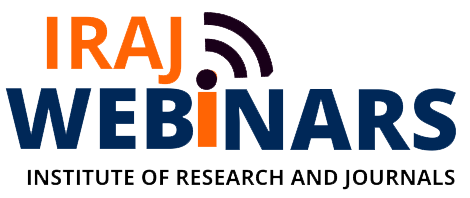
- [email protected]
- +91-8895689682

Welcome to the official website of the International Webinar on What is the Impact of Women on Corporate Board (IWIWCB-2021). The conference/Webinar will be held online. The Webinar will be organized by Eurasiaweb in Association with Institute of Research and Journals-IRAJ on 10th Nov 2021.
This webinar will uncover the study to re-examine the relationship between WOCB and CSP as the existing empirical literature yields mixed results (Rao and Tilt 2016; Byron and Post 2016), despite strong theoretical arguments in favor of WOCB regarding CSP. To this end, consistent with Cook and Glass (2018),we relied on two prominent theoretical frameworks from the field of organizational demography, which are token theory (Kanter 1977) and CMT (Kanter 1977; Childs and Krook 2008). The purpose of organizational demography is to specify how the demographic composition of a workgroup shapes organizational outcomes(Kanter 1977; Stewman 1988). In this study, to explain the existing empirical results, we hypothesize that the relationship between WOCB and CSP is not linear but rather non-linear. Indeed, token theory highlights the limits of solo or token representation.

Note : Only attendees who will attend the whole Webinar will be eligible to receive the certificate of Participation.
International Webinar on What is the Impact of Women on Corporate Board (IWIWCB-2021) will be an engaging online event where World’s round and eminent industry and academic expert speakers will deliver the presentation to a large audience who participate by submitting questions, responding to polls, and using other available interactive tools. It is an event held to overcome these difficulties, CMT postulates that a critical mass of women in necessary. To examine this non-linear relationship, we use a semiparametric approach, and specifically, GAM (Hastie and Tibshirani 1990; Wood 2017). In essence, this approach allows to examine the non-linearity of variable, thus enabling us to have a complete picture of the non-linear relationship between two variables (e.g., Trinh et al. 2018; Florackis and Ozkan 2009; Hamadi and Heinen 2015).
Several interesting findings emerge from our study. First, below a threshold of female directors of around 14% (i.e. more or less one female director), the effect of WOCB on CSP is zero, or even negative, as shown in Figures 1 and 2. We notice that almost 48% of our sample firms are found in this case.
Features of the webinar
The objective features of webinars are beyond the threshold of 30% of WOCB, our results show that the relationship between WOCB and CSP is still positive but decreases gradually. It seems to be a turning point. However, this finding should be considered cautiously as shown in Figures 1 and 2. There is an imprecision in the WOCB-CSP relationship due to the low number of observations in this area: barely 8% of the sample. Likewise, the derivative is very close to zero suggestion an inverted U-shaped curve. In view of this, our findings qualify the assumption of CMT that three female directors are likely to significantly influence CSR (e.g., Cook and Glass 2018; Ben-Amar et al. 2017)and that is a “magic number” (e.g., Joecks et al. 2013; Jia and Zhang 2013). The semiparametric approach shows that a critical mass of WOCB on CSP is indistinguishable. In practice, given that few companies reach or exceed the 30% threshold, it is difficult to empirically validate CMT’s claims. We suggest that the empirical results in this matter should be treated with caution.


Professor of Finance & IT at IDRAC Business School, France
+91-8280047516 (Call / Whatsapp)
Copyright © 2025. All right Reserved | IRAJ.IN